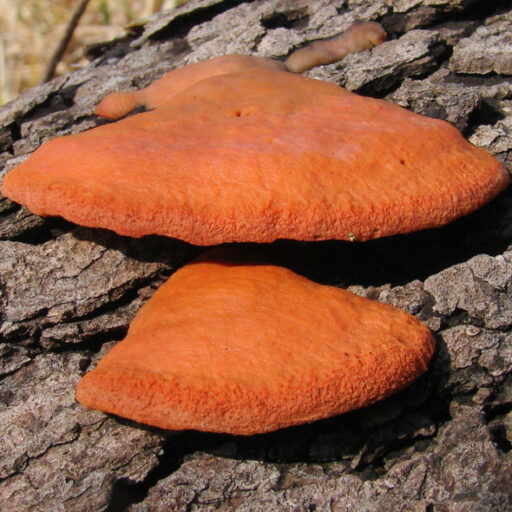Cyanosporus livens occurs in Eastern United States and Southern Canada.



Pristine examples of Cyanosporus cf. livens. Postia livens is a former name/synonym. Commonly called the blue cheese polypore. Has a very spongy and soft consistency. Usually bluish in color with white undertones; margin often white. Grows from wood, often from older fallen trees, hardwood and conifer. Cyanosporus livens can be found during the summer and into fall. Has a spectacular blue/gray spore print.
This…”fungus was transferred from Tyromyces to Postia because it is a brown-rotter and Tyromyces species are white-rotters.
The name P. caesia is now understood to be a European
species that does not occur in North America. What was
called P. caesia in North America is now understood to be
a complex of five macroscopically similar species with
P. livens perhaps being the most common.” (Now in the genus Cyanosporus.)
See Postia livens at Fungi Growing from Wood
